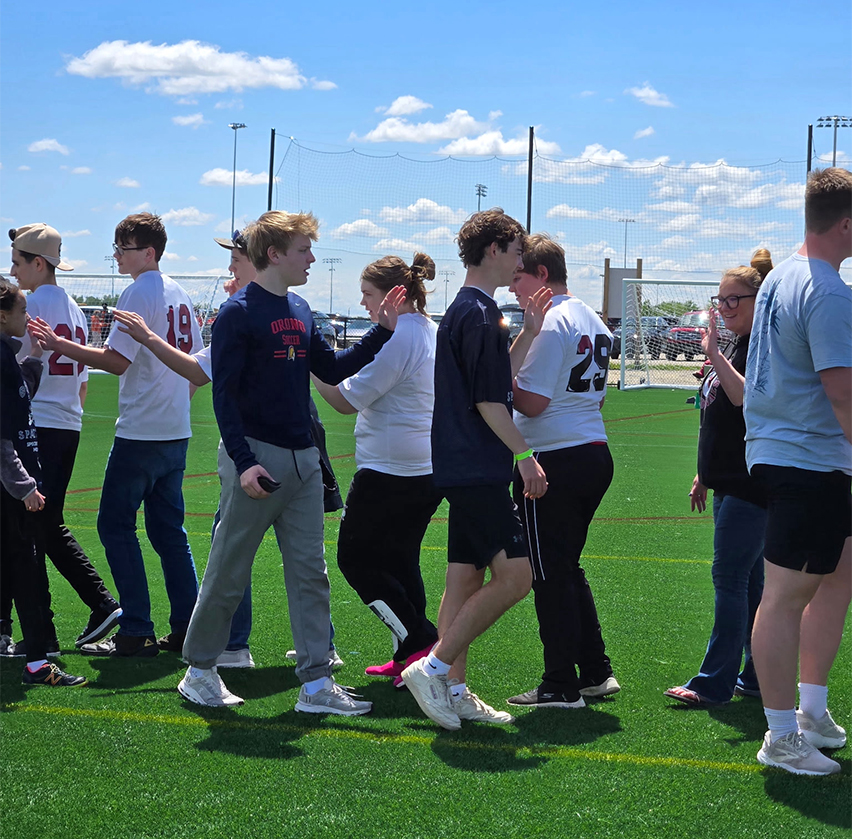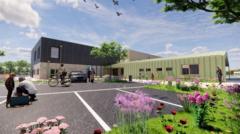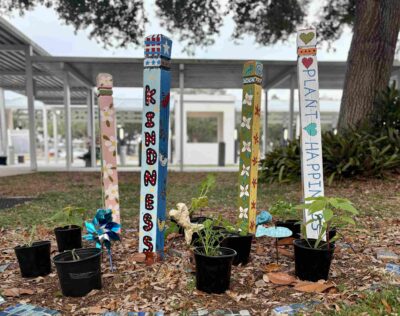Fairmont Schools’ Unified Program: A Model for Sustainable Development Goal Achievement
Executive Summary
Fairmont Schools has been distinguished as a National Banner School, one of only 14 institutions out of 3,174 in Minnesota to receive this recognition. The award acknowledges the success of its Unified Cardinals program in fostering an inclusive environment for students with disabilities. This initiative serves as a practical application of several United Nations Sustainable Development Goals (SDGs), particularly those focused on quality education, reduced inequalities, and good health and well-being.
Program Origins and Operations
The Unified Cardinals program was established in the 2017-18 academic year by teacher Mark Hernes and student Matt Lytle. Currently led by Head Coach Joelle Thomas and Assistant Coach Shawna Zabinski, the program engages 75 high school students in activities designed to promote inclusion.
- Core Mission: To foster a compassionate student body through meaningful connections and shared experiences in sports, leadership, and social activities.
- Partnerships: The program collaborates with Special Olympics to identify and participate in regional inclusive sporting events, demonstrating a commitment to SDG 17 (Partnerships for the Goals).
- Activities: The club organizes a variety of sports throughout the year, including pickleball and football, alongside social events like a “meet and greet” for students and staff from surrounding districts.
- Structure: Bi-monthly meetings are held to accommodate student schedules.
Alignment with Sustainable Development Goals (SDGs)
The Unified Cardinals program directly contributes to the achievement of several key SDGs by embedding principles of equity and inclusion into the educational framework.
- SDG 4: Quality Education: The program champions Target 4.5 by working to ensure equal access to all levels of education and school activities for students with disabilities. It creates an inclusive learning environment where all students can thrive, fostering the principles of education for sustainable development and global citizenship (Target 4.7).
- SDG 10: Reduced Inequalities: At its core, the initiative addresses Target 10.2 by promoting the social inclusion of all students, irrespective of disability. By breaking down social barriers, it ensures equal opportunity and fosters a culture of acceptance and integrity.
- SDG 3: Good Health and Well-being: Through unified sports and positive social engagement, the program enhances the physical and mental well-being of all participants (Target 3.4). The reported increase in kindness, courage, and perseverance among students contributes to a healthier school community.
Impact and Outcomes
The program has generated a tangible, positive shift in the school’s culture. Coaches report observable improvements in student character and a more inclusive atmosphere throughout the school.
- Student Development: Participants demonstrate enhanced kindness, a growth mindset, courage, perseverance, and integrity.
- School Culture: There is a visible increase in positive interactions, such as high-fives and greetings, between students with and without disabilities in common areas. This signifies a successful integration of inclusive values into the daily life of the school.
Future Directives and Strategic Expansion
Fairmont Schools’ administration is committed to expanding the program’s reach, aiming to become a regional leader in inclusive practices that align with global sustainability targets.
Planned Initiatives
- Development of a unified advisory class.
- Expansion of unified curriculum options, building on the success of the current unified art class.
- Creation of a cohesive, long-term strategic plan in collaboration with the school superintendent.
Through these continued efforts, the Unified Cardinals program aims to influence not only the educational sector but also the broader community’s approach to inclusion, positioning itself at the forefront of a social “revolution” toward greater equity.
Analysis of SDGs in the Article
1. Which SDGs are addressed or connected to the issues highlighted in the article?
-
SDG 4: Quality Education
- The article focuses on creating an inclusive educational environment at Fairmont Schools. The Unified Cardinals program and the plan to implement unified classes, such as a unified art class, directly contribute to providing equitable and inclusive education for students with disabilities.
-
SDG 10: Reduced Inequalities
- The core theme of the article is the social inclusion of students with disabilities. The program is explicitly designed to break down barriers and foster connections between students with and without disabilities, directly addressing the goal of reducing inequalities by promoting inclusion.
-
SDG 3: Good Health and Well-being
- By promoting inclusion through sports (track and field, pickleball, football) and social activities, the program supports the physical, mental, and social well-being of all participating students. The article notes the program fosters a “stronger, more compassionate student body,” which is linked to overall well-being.
-
SDG 17: Partnerships for the Goals
- The article mentions that the Unified Cardinals program collaborates with the organization Special Olympics to select and organize its activities. This partnership between the school and a civil society organization is crucial for the program’s success and aligns with the goal of fostering partnerships to achieve sustainable development.
2. What specific targets under those SDGs can be identified based on the article’s content?
-
Target 4.5: By 2030, eliminate gender disparities in education and ensure equal access to all levels of education and vocational training for the vulnerable, including persons with disabilities, indigenous peoples and children in vulnerable situations.
- The article’s entire focus is on a program that ensures students with disabilities have equal access to and can participate fully in school sports, social events, and even academic classes like the “unified art class.”
-
Target 4.a: Build and upgrade education facilities that are child, disability and gender sensitive and provide safe, non-violent, inclusive and effective learning environments for all.
- The Unified Cardinals program is a key initiative in creating an “inclusive and effective learning environment.” The article highlights how the program has led to a positive change in the school culture, making it a safer and more welcoming place for students with disabilities, as seen by positive interactions in the hallways.
-
Target 10.2: By 2030, empower and promote the social, economic and political inclusion of all, irrespective of age, sex, disability, race, ethnicity, origin, religion or economic or other status.
- The program directly promotes the social inclusion of students with disabilities. The article states, “We promote inclusion through sports leadership opportunities and social events and activities,” which is the central aim of this target.
-
Target 17.17: Encourage and promote effective public, public-private and civil society partnerships, building on the experience and resourcing strategies of partnerships.
- The article explicitly states that the club chooses its activities with help from Special Olympics: “Special Olympics sends out an email at the beginning of the year and says, ‘Hey, here are all the opportunities that you can go to.'” This demonstrates a partnership with a civil society organization to achieve inclusion goals.
3. Are there any indicators mentioned or implied in the article that can be used to measure progress towards the identified targets?
-
Quantitative Indicators:
- Number of participating schools: The article states that Fairmont was one of 14 schools in Minnesota (out of 3,174) to receive the National Banner School Recognition, indicating a measure of how many schools are implementing successful inclusion programs.
- Number of participating students: The article mentions that 75 high school students are currently involved in the Unified Cardinals club, which serves as a direct measure of student engagement in the program.
- Number and variety of inclusive activities: The article lists several activities, including a Unified Track and Field Team, pickleball, football, a meet-and-greet, and a unified art class. The expansion of these offerings is an indicator of progress.
-
Qualitative Indicators:
- Formal Recognition: Receiving the “National Banner School Recognition” is a key indicator that the school has met 10 specific requirements for inclusion, serving as a benchmark for success.
- Changes in School Culture: The article implies progress can be measured by observing changes in the school environment. Teachers note a “change in the culture at Fairmont Area Schools,” citing examples like “high-fives, fist bumps” between students in the hallways as evidence of a more positive and inclusive community.
- Development of Personal Attributes: Progress is also indicated by the personal growth seen in students, such as “kindness, growth mindset,” “courage,” “perseverance,” and “acceptance.”
4. SDGs, Targets, and Indicators Table
| SDGs | Targets | Indicators Identified in the Article |
|---|---|---|
| SDG 4: Quality Education |
Target 4.5: Ensure equal access to all levels of education and vocational training for the vulnerable, including persons with disabilities.
Target 4.a: Provide safe, non-violent, inclusive and effective learning environments for all. |
|
| SDG 10: Reduced Inequalities | Target 10.2: Empower and promote the social inclusion of all, irrespective of disability. |
|
| SDG 3: Good Health and Well-being | Target 3.4: Promote mental health and well-being. |
|
| SDG 17: Partnerships for the Goals | Target 17.17: Encourage and promote effective public, public-private and civil society partnerships. |
|
Source: fairmontsentinel.com







